Who Is Arnar Gunnlaugsson?
Vikingur Reykjavik are one of Iceland’s most historic football clubs, with seven league titles to their name, two of which have come within the last few years (2023 and 2021) and five Icelandic Cups (2023, 2022, 2021, 2019 and 1971).
However, life hasn’t been entirely straightforward throughout their history, including their recent history.
Before their cup triumph under head coach Arnar Gunnlaugsson in 2019, they’d last tasted domestic success with their league title win of 1982.
They waited 37 years to put some fresh silverware in their trophy cabinet.
Meanwhile, there was a gap of 39 years between their second-most recent and third-most recent league title victories — needless to say, a lengthy gap.
As recently as the 2013 campaign, they were plying their trade in the second tier when they eventually earned promotion under Ólafur Thórdarson following their 2011 top-flight relegation.
Two managers later, Gunnlaugsson arrived initially as an assistant under experienced boss Logi Ólafsson for the 2018 season before the now-50-year-old coach — who played in competitions such as the Eredivisie with Feyenoord, English Premier League with Bolton Wanderers and Leicester City as well as Scottish Premiership with Dundee United during his playing career — assumed the Víkingsvöllur hot seat.
Since then, a period of unprecedented success has been in progress for the club, with 80% of their Icelandic Cup wins, and 28.6% of their league title wins coming during Gunnlaugsson’s five-season (so far) tenure.
This tactical analysis will break down Gunnlaugsson’s side and highlight what exactly has made them so successful of late in terms of strategy and tactics.
Our analysis will focus on these aspects of the team to put some focus on the 50-year-old coach’s astute performance in this area that’s made Vikingur very fun to watch and difficult to beat, while also highlighting some key squad members that have undoubtedly meshed well with the manager’s tactics and vice versa.
Establishing Vikingur as Iceland’s team to beat
Before entering the tactical analysis, it’s worth breaking down exactly how Vikingur and their fortunes have been transformed during Gunlaugsson’s reign.
We’ll use the following visualisation to help us with this.
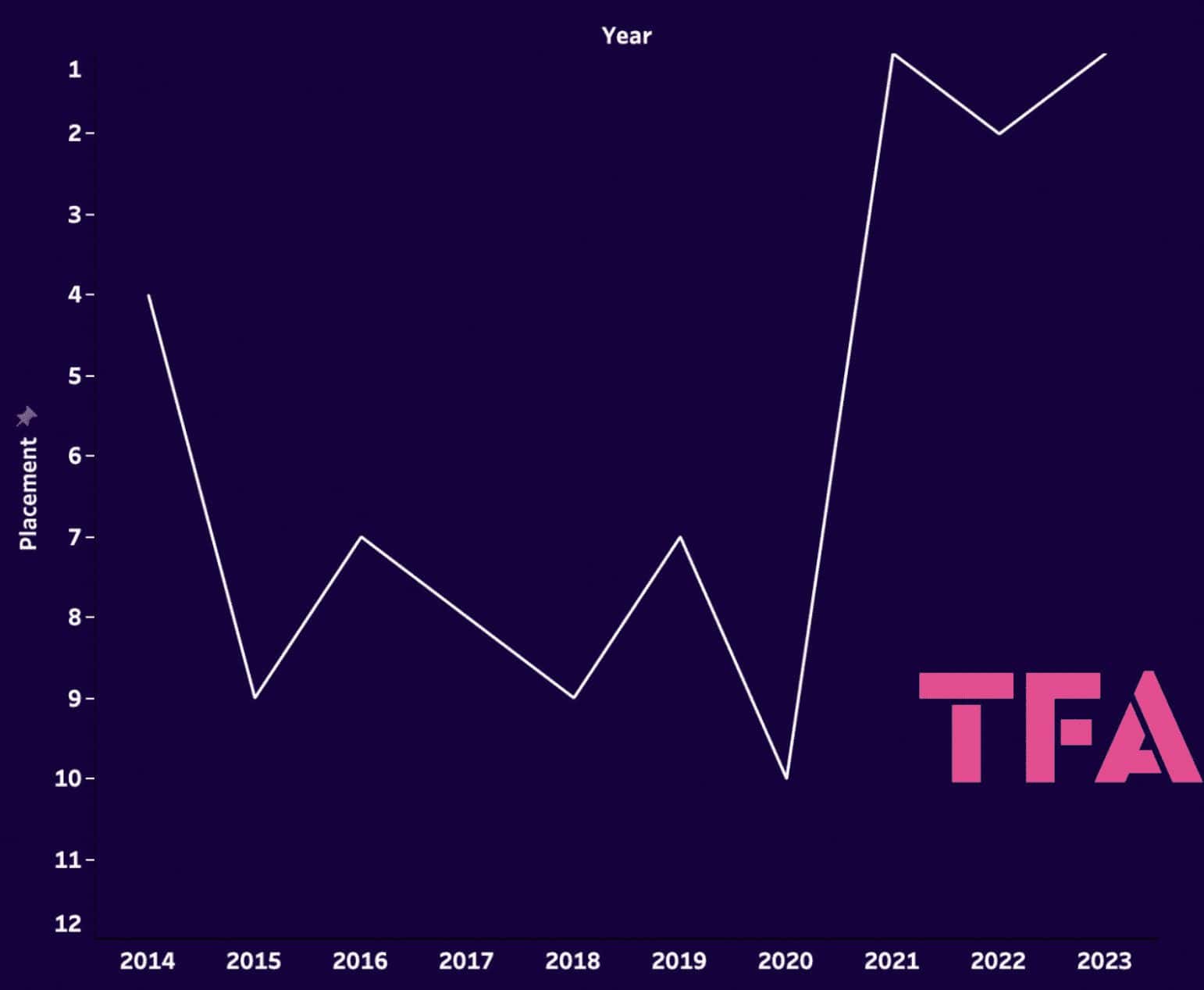
Prior to Gunlaugsson assuming the manager’s role in 2019, Vikingur were floating around the mid-lower table area after enjoying a positive first season back in the top flight in 2014, which they finished in fourth place.
From 2021 to 2023, they’ve managed to achieve a top-two finish in three consecutive seasons, winning the league in two of them.
Gunlaugsson’s tenure didn’t start ideally.
As we can see, they ended 2020 in 10th place — a record low for the club following their 2013 promotion from the second tier.
However, they’ve been rewarded for their patience with the head coach, as he’s directly followed that disappointment with their best league performances in decades.
To achieve this success, Gunlaugsson has implemented a clear tactical identity and style of play at the club.
We’ll now go into detail on some critical elements as we break down his successful approach with the Besta deild karla champions.
Build-up and ball progression
Gunlaugsson has overseen a transformation of Vikingur’s possession game throughout his tenure at the club.
The season before he took over as first-team boss, Vikingur retained an average of 45.9% possession — ninth-lowest in the league.
This is far lower than they’ve averaged every season since then (55.5% in 2019 — third in the league, 59.4% in 2020 — second in the league, 51.6% in 2021 — fifth in the league, 59.3% in 2022 — first in the league and 55.3% in 2023 — second in the league).
This isn’t to say possession is exactly ‘the goal’ here; that’s definitely not the case.
But the rise in possession has been a natural result of Gunlaugsson putting his stamp and tactical identity on the side — one which sees them aiming to build through the opponent’s defensive structure from the back via intelligent movement and positional rotations in central areas.
This sometimes results in them spending more time on the ball as they search for the perfect path through the opposition.
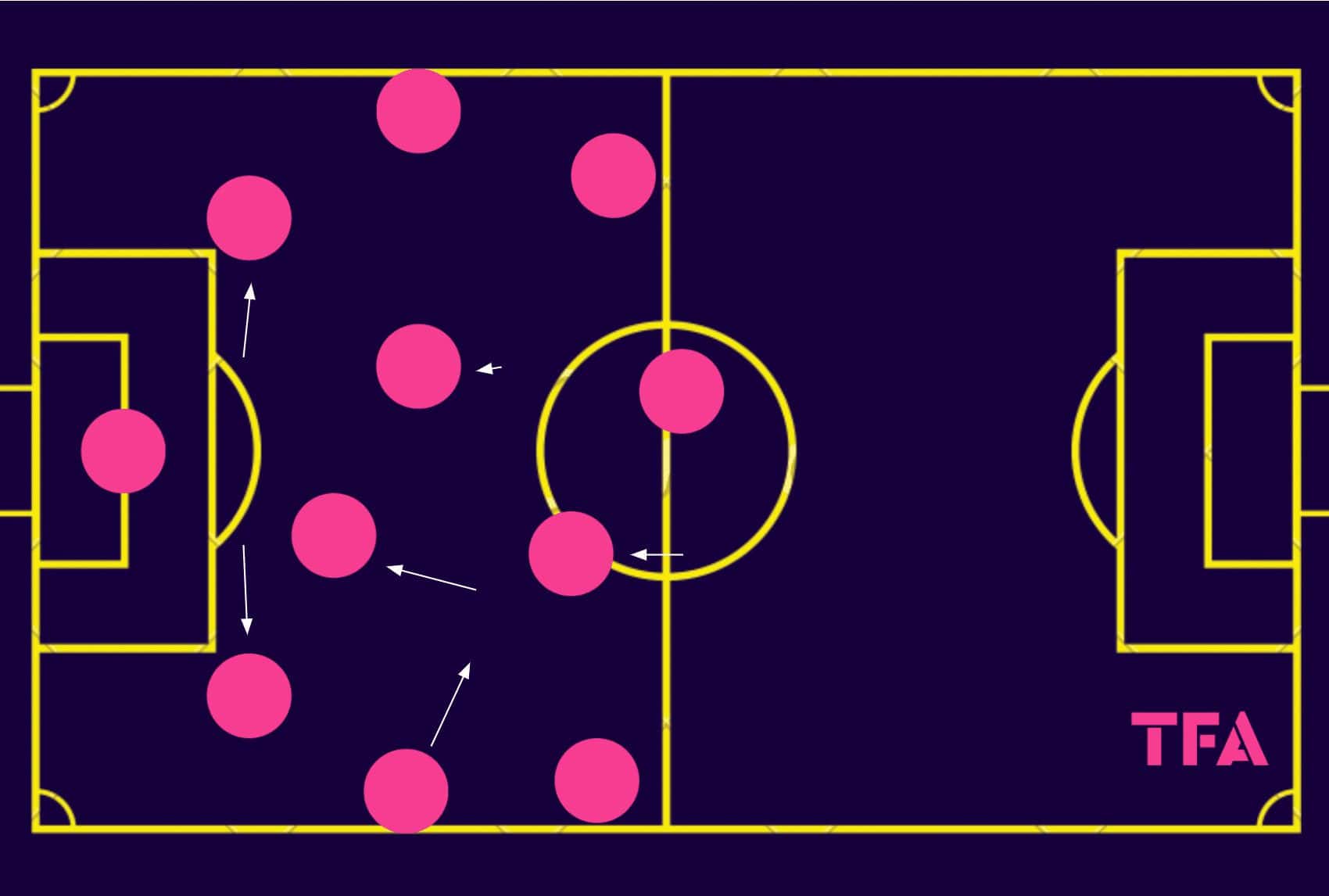
Figure 2, for instance, provides a typical example of how you could expect to see Vikingur in the build-up phase.
That isn’t to say this structure is one they will constantly look to create, as that’s not the case.
As the centre-backs split wide, sometimes one midfielder will drop, while on other occasions, both will drop.
Similarly, the full-backs may remain wide at times, while one may invert to a central position on other occasions.
However, it’s common to see the centre-backs split with the ball at the goalkeeper’s feet while players rotate in, out and around the central areas to manipulate the opposition’s press and find some space to receive with a chance to go on and progress the team upfield.
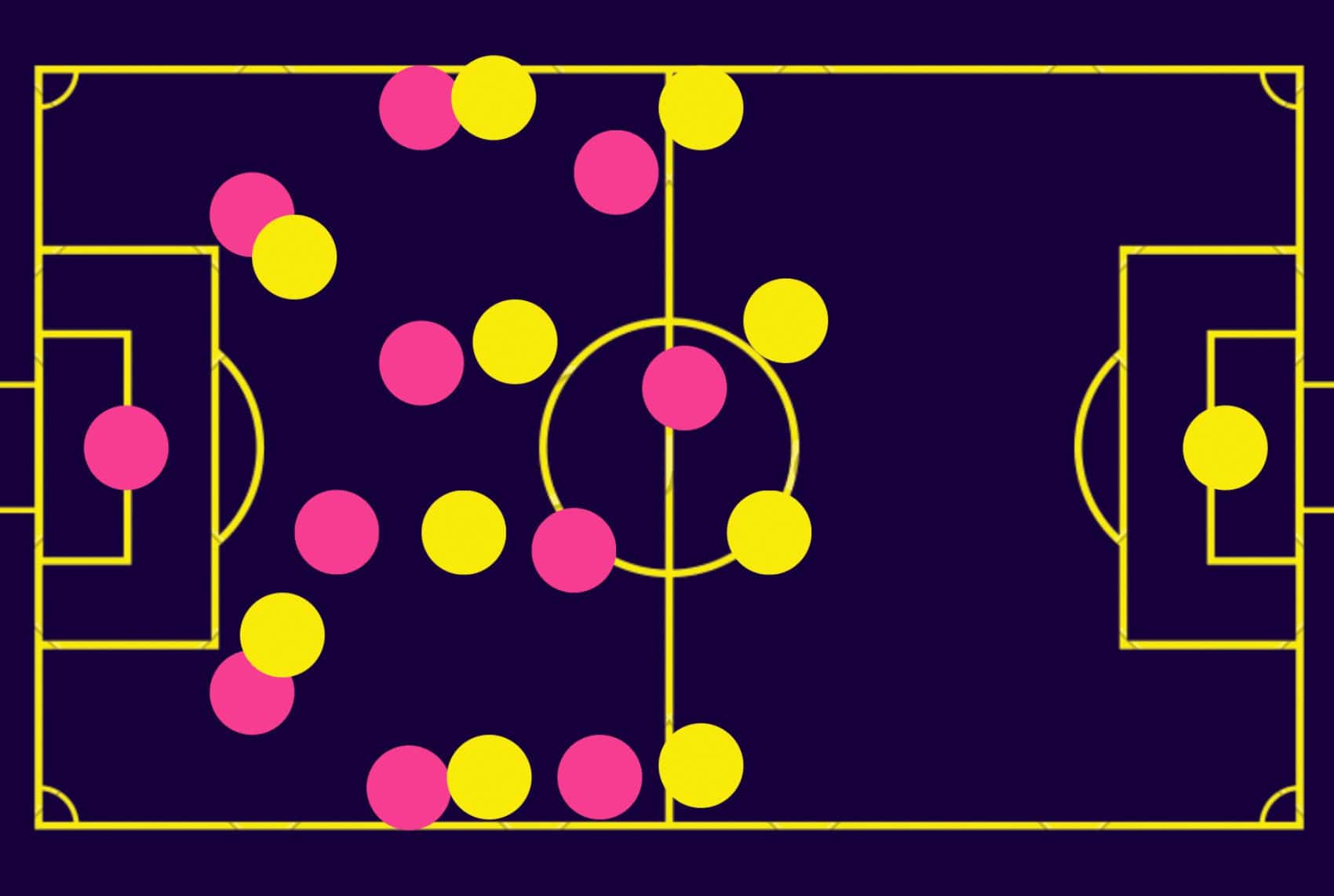
If you take the example from figure 2 and put it against a typical 4-4-2 pressing structure, you can see how the centre-backs splitting creates a path into the central midfielders for the goalkeeper, while the opposition’s left central midfielder is overloaded as Vikingur’s left-striker drops in behind to create a midfield advantage for Gunlaugsson’s side.
Again, this isn’t an exact pattern of movement you can expect to see all the time.
Essentially, the Vikingur players will react to each other’s movement as they try to create central overloads and opportunities for progression.
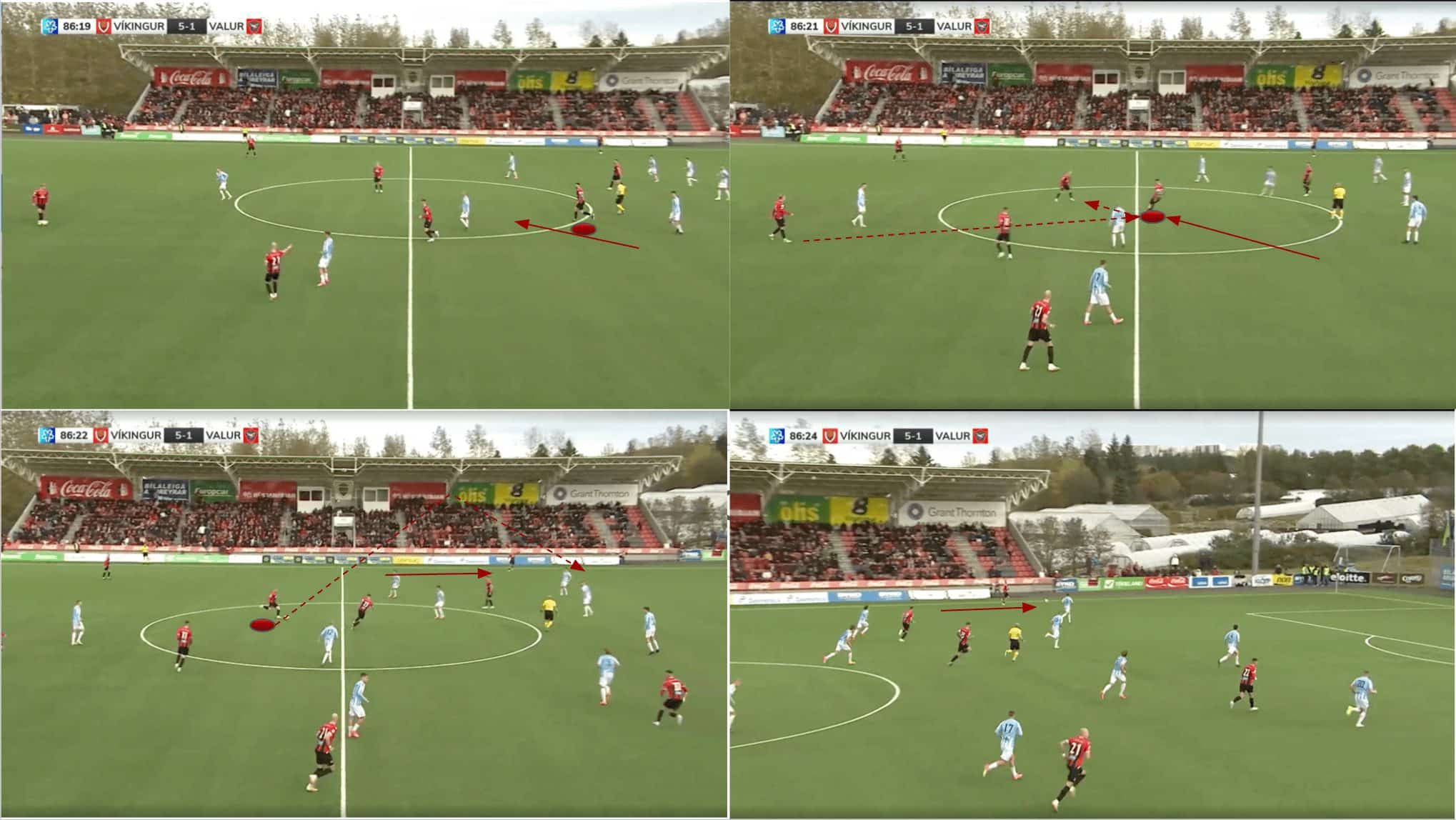
In figure 4, we can see Vikingur’s left centre-forward dropping into midfield between the opposition’s central midfielders, who are already occupied by Vikingur’s midfield duo.
As he does so, he forms a diamond, which he is at the tip of, in between the opposition’s midfielders and positioned on the blindside of the opposition’s left central midfielder — the one he’s nearest to.
This allows Vikingur’s right centre-back to play a progressive pass through to him.
After a neat little third-man combination with his left central midfielder, Vikingur end up progressing into the final third with the ball at the left-winger’s feet moving in behind the opposition’s backline.
Again, a bit of movement into the centre from players initially positioned outside the midfield creates the overload necessary for Vikingur to slice through the centre of the pitch and quickly advance into a threatening position, approaching the opposition’s penalty box.
Danijel Djuric’s role
This leads us to 20-year-old Danijel Djuric and his prominent role within Gunlaugsson’s tactics.
The Iceland U21 international featured in the starting XI for 64% of his side’s league games this season, playing 58% of all possible league minutes.
Featuring in some games off the left, Djuric primarily featured as a second-striker for Gunlaugsson this season, frequently dropping into deeper positions to receive on the half-turn and advance his side into a threatening position thereafter.
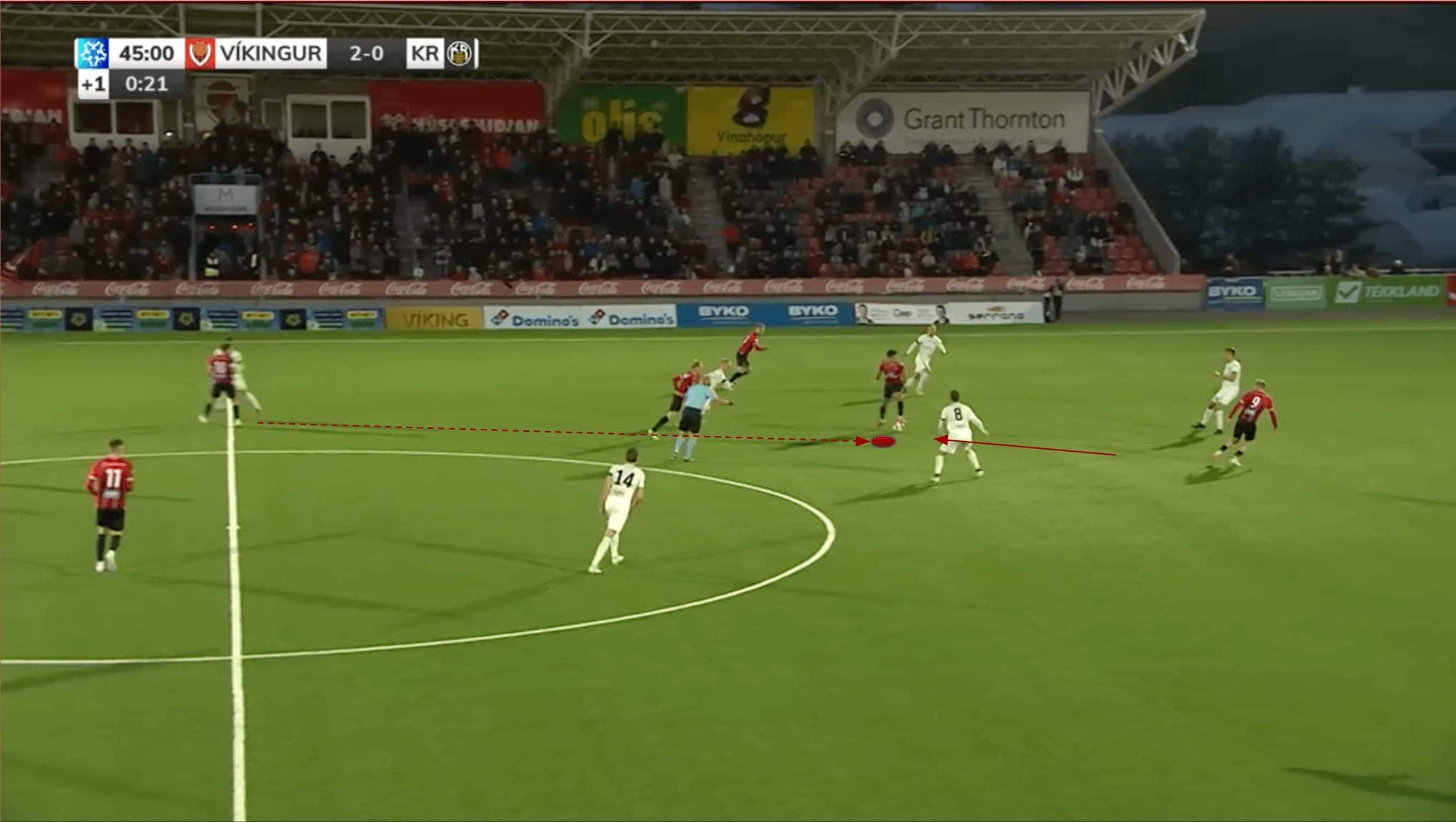
Djuric demonstrated excellent spatial awareness and movement to pick up good positions where he could benefit his deeper teammates by providing a valuable progressive passing outlet, as was the case here in figure 5.
In this case, Djuric has just spotted some space behind the midfield, similar to what we saw in figure 4.
After dropping in behind the opposition’s right central midfielder, he can receive from his left centre-back, turn and quickly decide on his next move while scanning.
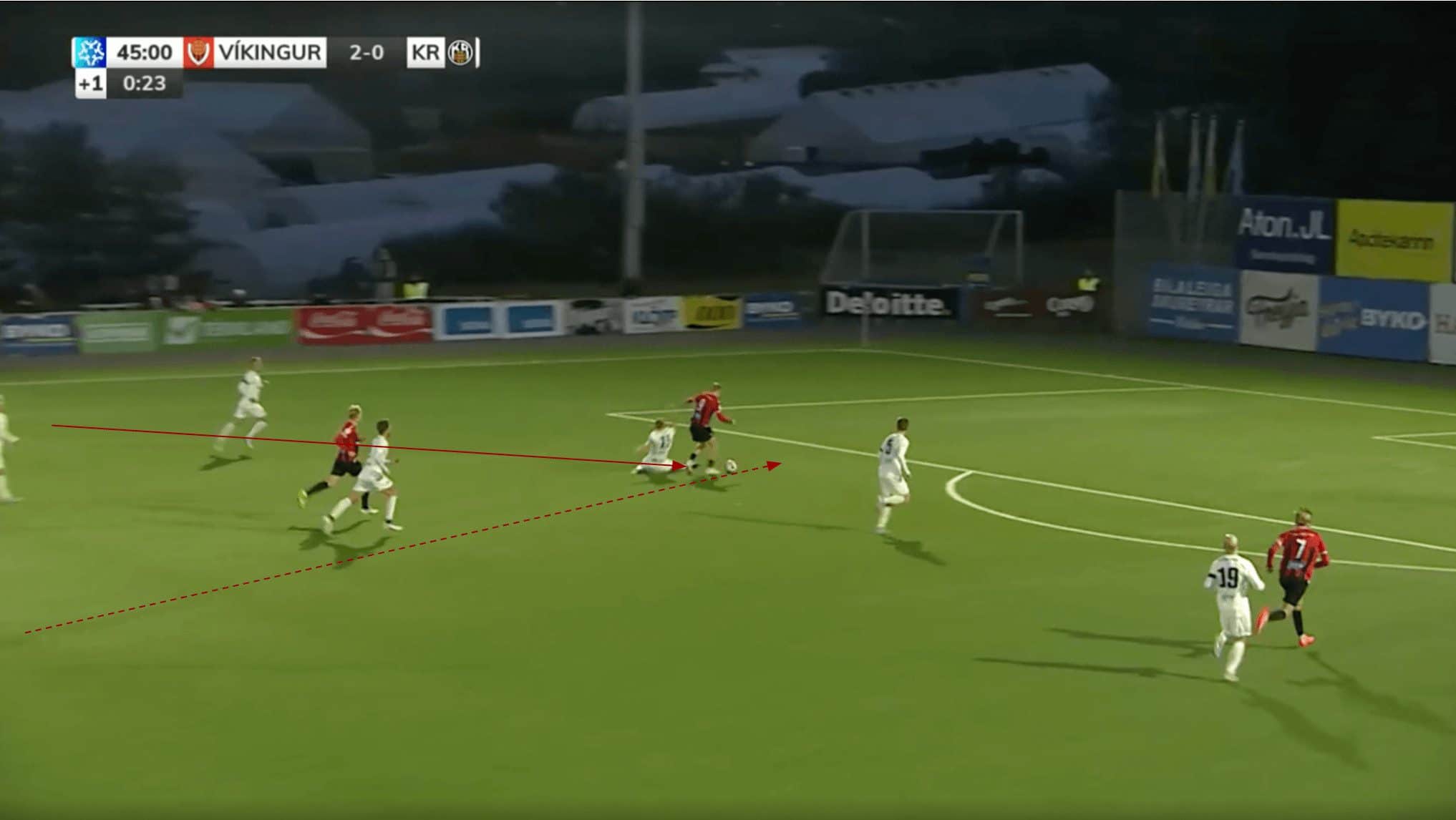
He picks out the run of the striker ahead via a perfectly weighted through ball that goes just out of the opposition right centre-back’s reach but at a perfect level of power for the centre-forward to get on the ball and start moving towards the goalkeeper.
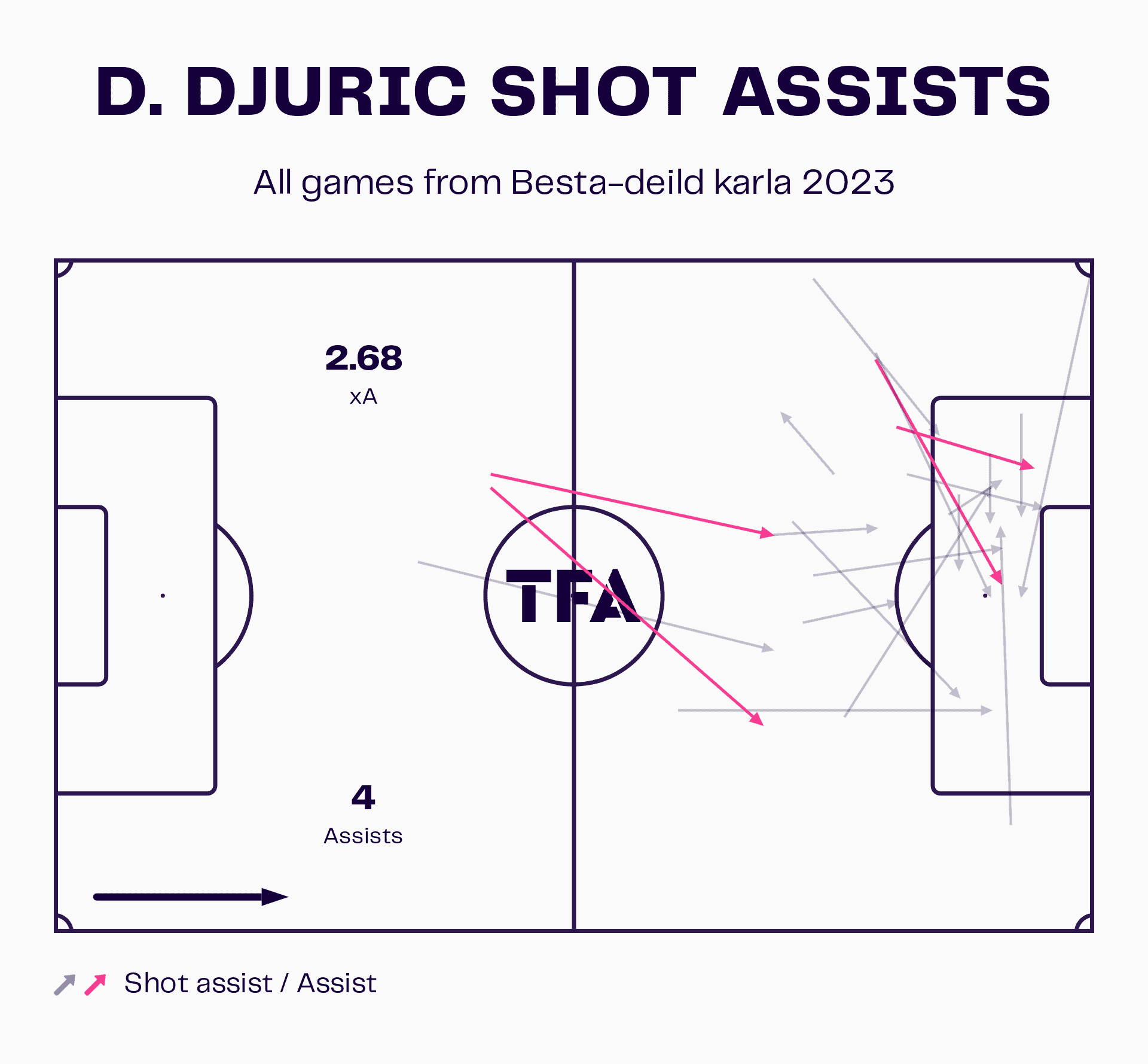
Djuric ended the league season with four assists, most of which were through balls played in behind the opposition’s backline, as we saw in the example above.
Many of his key passes came from central areas, as we also saw in the above demonstrations — usually, a result of his dropping from high into the midfield zone, creating an overload, exploiting the space and quickly springing a pass in behind for the striker to attack.
Djuric’s intelligent movement and spatial awareness, combined with his immense technical ability and intelligent scanning, made him a perfect profile for this role requiring the exploitation of space within Gunlaugsson’s squad; he performed this role well and undoubtedly played a significant part in his club’s 2023 success.
The wingers’ attacking roles
Djuric was Vikingur’s primary central source of creativity this season, with the second striker frequently presenting a major threat due to his intelligent movement and technical quality in the middle of the park.
However, this didn’t make him the team’s leading source of creativity, as many more of the Icelandic champions’ chances were generated via the wings.
It was no one-off that the ball from the left central midfielder was sent over the top for the left-winger to chase back in figure 4.
This was a common sight within Vikingur’s possession game; they used the wide areas heavily within the final third to generate goalscoring opportunities.
As a result, it was a very common sight to see them initially break through the centre via their positional rotations, as discussed previously, before then moving out wide as they broke into the final third.
Vikingur’s two main wingers this season were 26-year-old Birnir Snaer Ingason and 25-year-old Erlingur Agnarsson.
While both played regularly in the wide areas within Gunlaugsson’s setup, and both were crucial creators for their side, these two wingers operate in very different ways, presenting varied threats to the opposition depending on which wing Vikingur’s attack progresses down.
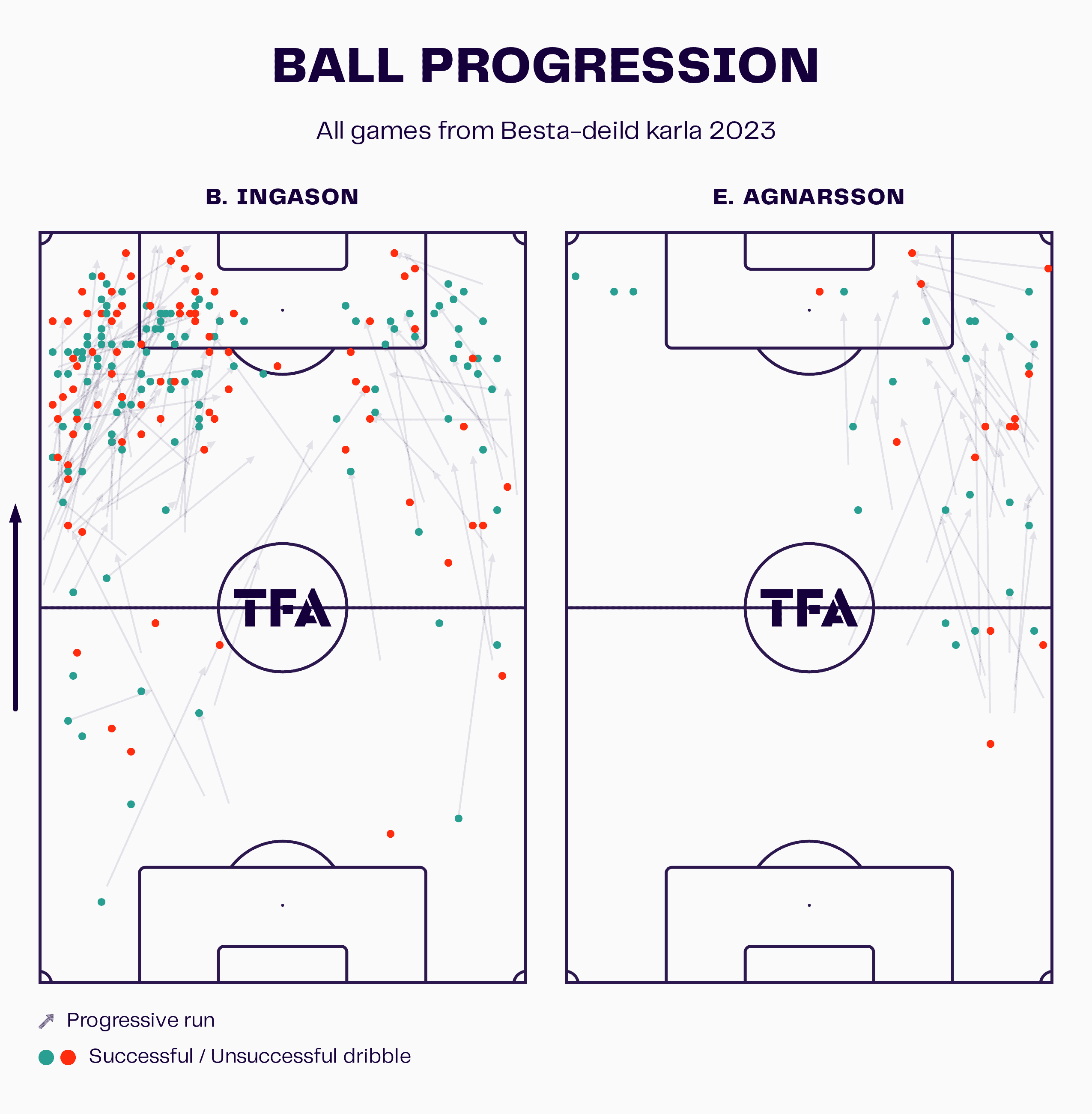
The two wide threats’ respective ball progression maps highlight a big part of the contrast between these two players: Ingason is a very high-volume dribbler who loves to take on his opposing full-back, beat them, take the ball close to the goal and cross low or even pull off a cutback while Agnarsson, on the other hand, is not much of a dribbler at all.
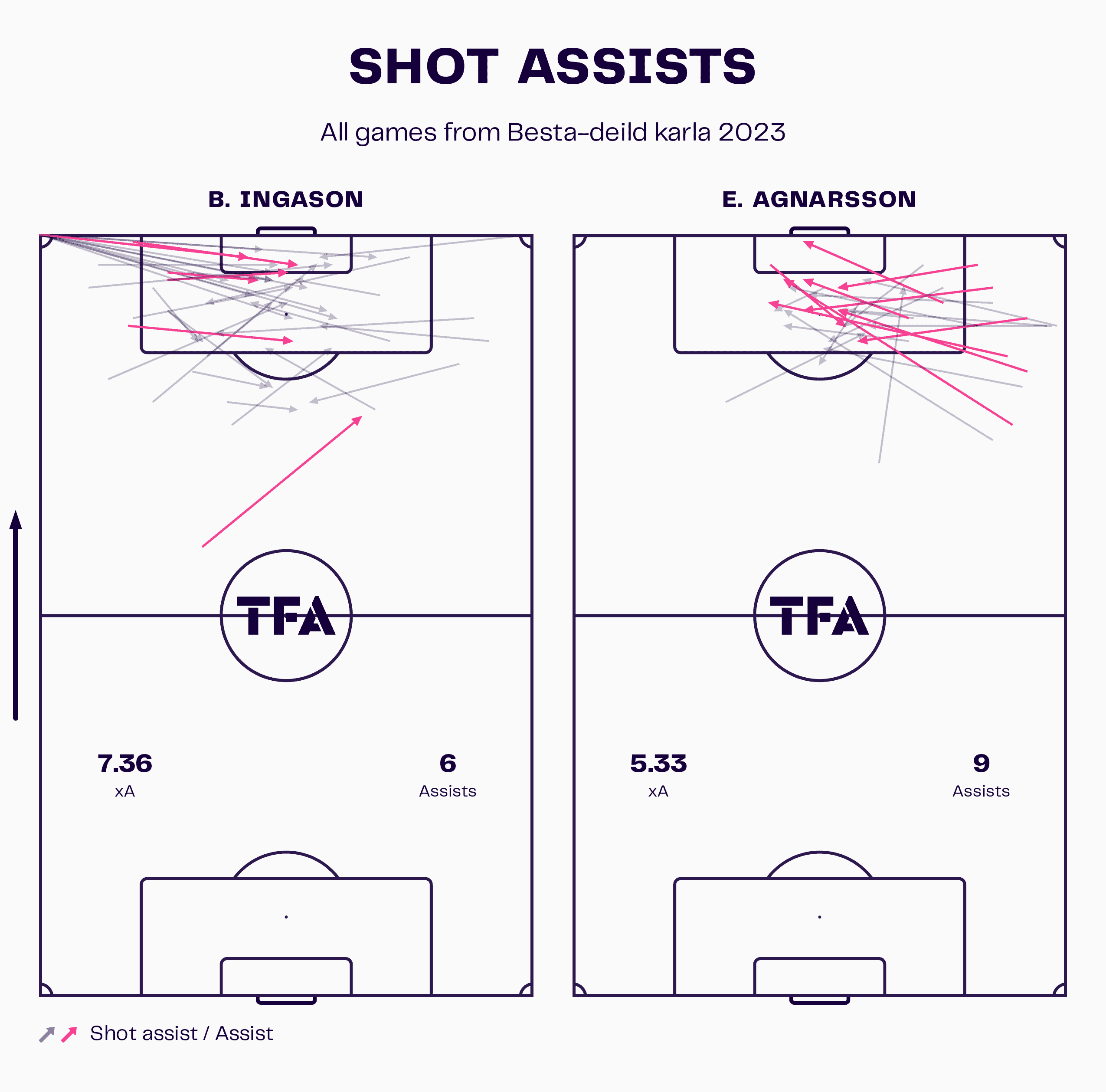
Moving on into their respective shot assist maps, we can see that from open play, a lot of Ingason’s shot assists came from relatively close to the box, if not actually inside the box, further reinforcing our point regarding his tendencies to take on the full-back, aiming to beat them and advance into an excellent position to create from closer to goal.
On the other hand, Agnarsson, who ended the campaign with the joint-most assists (nine) and second-most expected assists (trailing only Ingason) of any Vikingur player, was happier to cross earlier and from deep, resulting in different types of chances for the centre-forwards compared to what they were being supplied with from the left.
Both wingers created ample goalscoring opportunities for the strikers, and both ended up with a great number of assists at the end of the campaign, highlighting how vital the wide creation and its varied nature was for Gunlaugsson’s side in their title-winning season.
Vikingur’s defensive style
The final section of our tactical analysis will focus on Vikingur’s defensive style and how the head coach set them up to stifle their opponents during the 2023 campaign.
Gunlaugsson’s team ended the season with the second-best defensive record (30) in terms of goals conceded and the best defensive record (29.25) with regard to expected goals conceded.
So, the natural question to ask with that knowledge probably is: how did the Icelandic champions achieve this success at the back on their way to the title?
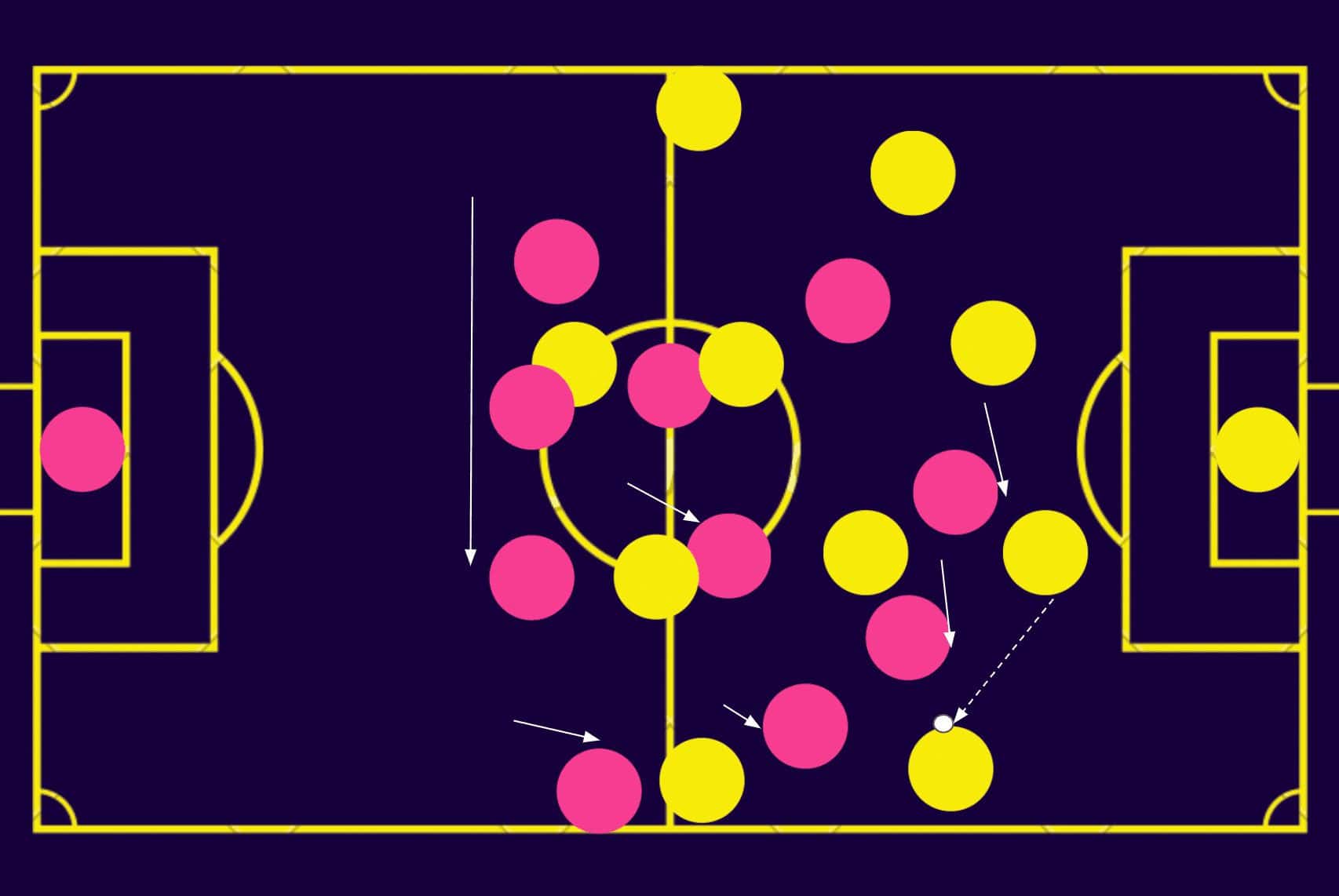
Vikingur defended neither extremely aggressively nor extremely passively this term.
They were typically set up in a mid-block before engaging the opponent and attempting to dispossess them.
We have a general example of Vikingur’s line height at the time they would engage with the opposition in figure 10.
The ball-near striker would defend in quite a ball-oriented manner, whilst the other centre-forward, the ball-near winger, ball-near central midfielder and ball-near full-back would all cover the immediate passing options.
All the rest of Vikingur’s outfielders would then focus on closing the space, ensuring no significant gaps opened up between them and those positioned more closely to the opposition ball-carrier for opposition players to exploit via intelligent movement in between the defenders.
In general, they would try to force the opposition out wide before pressing very aggressively — this is a common pressing trigger within the football world, and that was no different with Vikingur this term.
Gunlaugsson’s side were typically well-organised and energetic in their press once the trigger was pulled.
Every player knew what was expected of them, and this played an essential role in their defensive success; it’s a testament to the manager and his coaching team’s effective training ground work with the players.
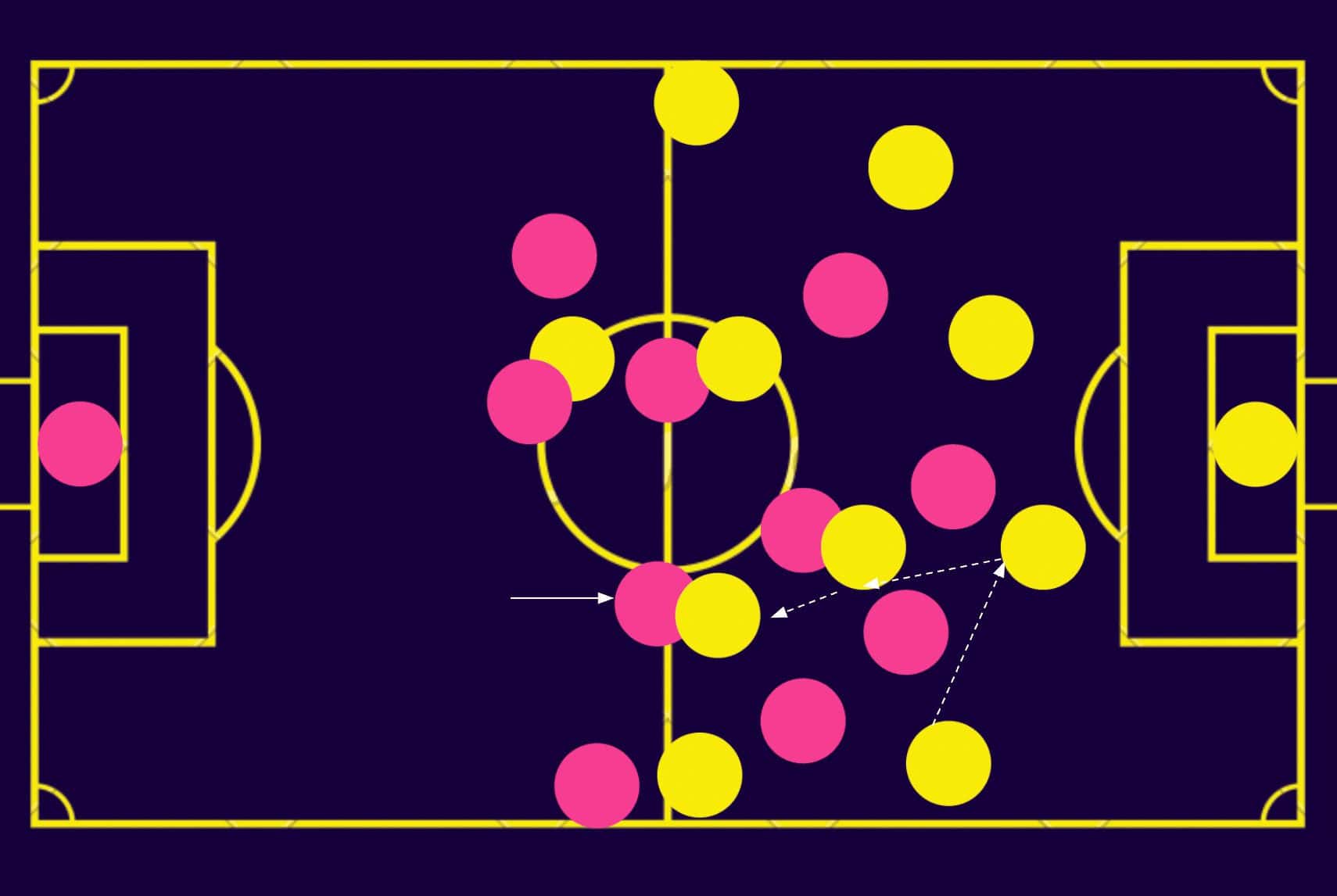
On occasions when the opposition could bypass the first/second lines of pressure and find, perhaps, a dropping centre-forward with a progressive ball, it was typical to see Vikingur’s centre-backs defending very aggressively, following dropping forwards into midfield and sticking very tight, aiming to deny them any space or opportunity to turn and regain the ball high rather than focus on protecting the space behind.
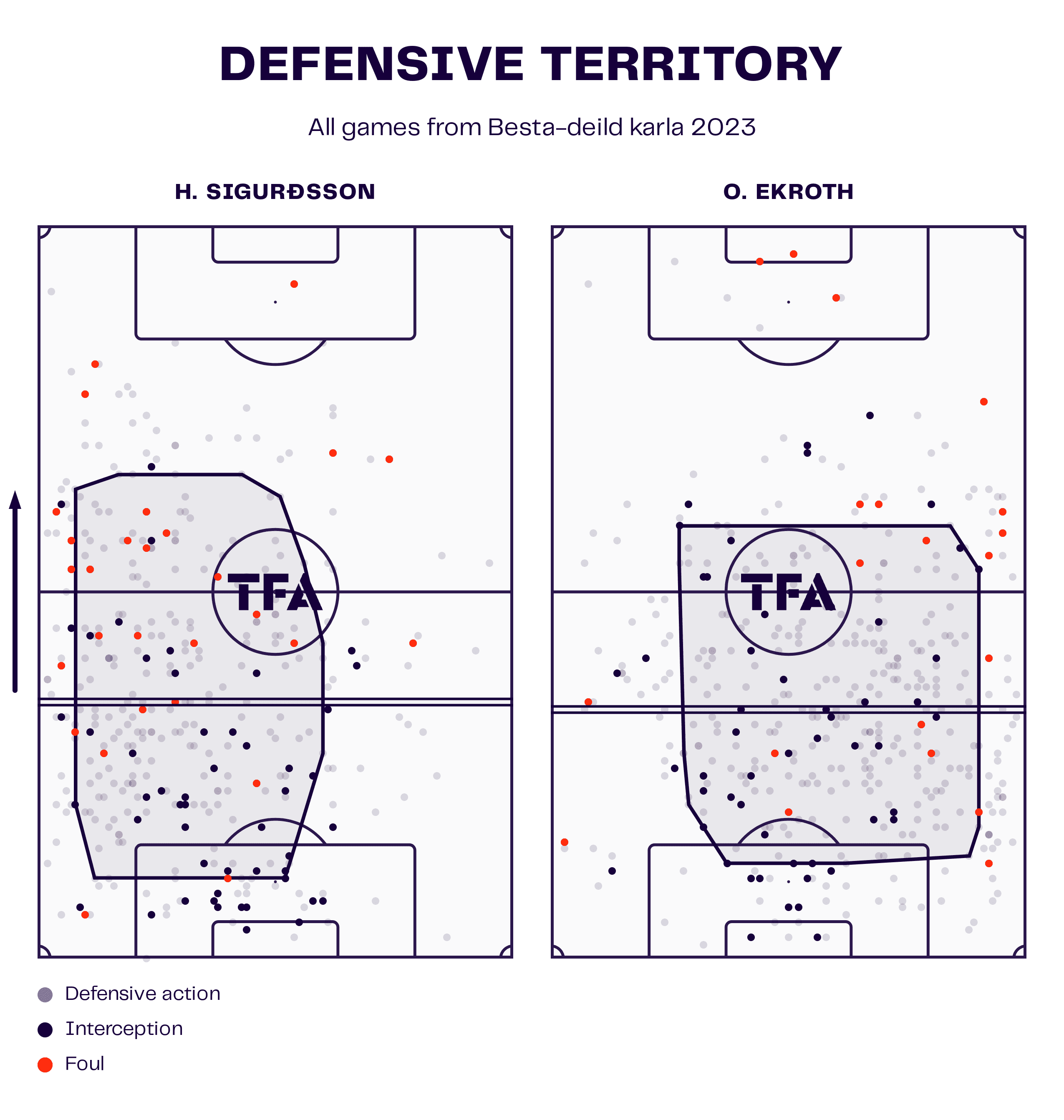
The experienced duo of 35-year-old Halldór Smári Sigurdsson and 31-year-old Oliver Ekroth formed Vikingur’s primary central defensive duo this past season.
Above are their respective defensive territory maps, highlighting the fact that they were not afraid to venture into the opposition’s half to engage at times when necessary.
Gunlaugsson would prefer the centre-backs fail to regain the ball high despite following the striker into the midfield zone and get exposed in behind over, allowing the dropping forward to enjoy all the time and space in the world so they could potentially pick the backline apart with a through ball anyway.
It’s risky, but it has its advantages, both defensive and offensively, considering that regaining the ball high allows Vikingur to launch a counterattack from a very threatening area and potentially put the opposition’s backline under a lot of immediate pressure.
Conclusion
To conclude this tactical analysis of Arnar Gunnlaugsson’s title-winning Vikingur Reykjavik, the tactical points we’ve discussed in this article have been slowly but surely engrained into the DNA of this team over the past five years, resulting in the champions we see today.
This team has been transformed from a mid-lower table outfit to a consistent presence at the business end of the table, thanks in large part to the tactical blueprint the head coach has laid out and successfully implemented.





Comments